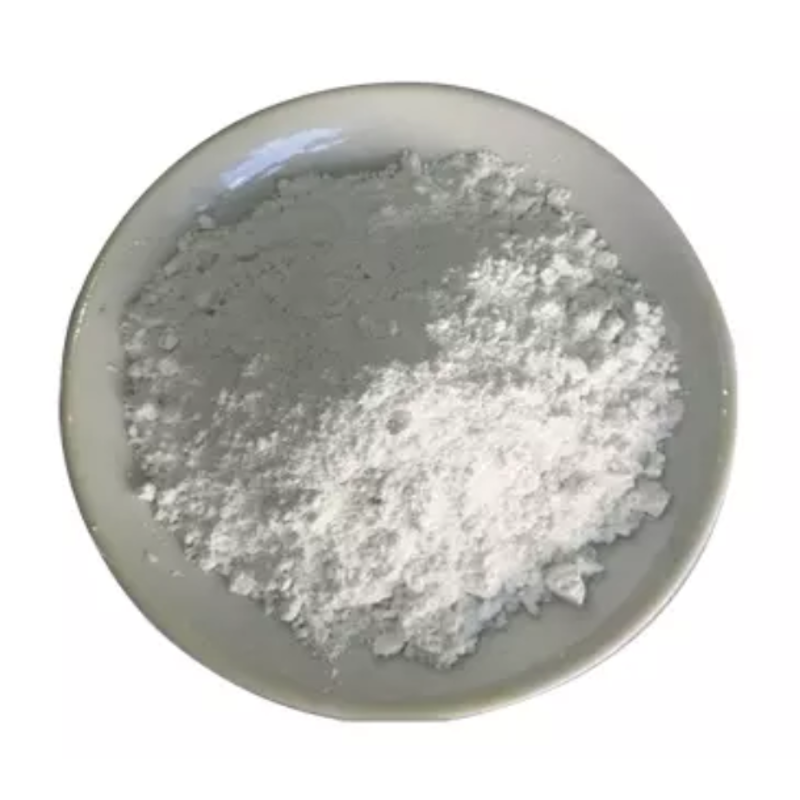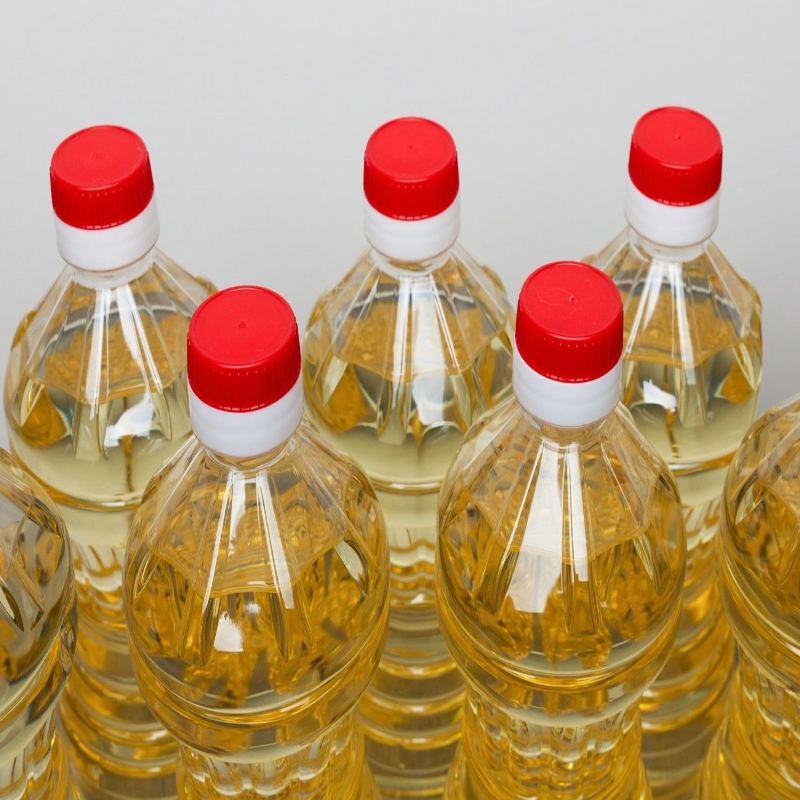-
Categories
-
Pharmaceutical Intermediates
-
Active Pharmaceutical Ingredients
-
Food Additives
- Industrial Coatings
- Agrochemicals
- Dyes and Pigments
- Surfactant
- Flavors and Fragrances
- Chemical Reagents
- Catalyst and Auxiliary
- Natural Products
- Inorganic Chemistry
-
Organic Chemistry
-
Biochemical Engineering
- Analytical Chemistry
-
Cosmetic Ingredient
- Water Treatment Chemical
-
Pharmaceutical Intermediates
Promotion
ECHEMI Mall
Wholesale
Weekly Price
Exhibition
News
-
Trade Service
Enzymes are a class of proteins with highly catalytic activity in the synthesis of biological cell protoplasm, which are widely distributed in animals, plants and microorganisms and plays a very important role in the life process of the body's growth and reproductionIn the late 1980s, some feed enzyme products from abroad began to be widely used in the 1990s in the United States and Finland to enter the Chinese market, and since then China began to feed enzyme research and application of feed enzymes in the livestock and poultry breeding industry has been very common in aquaculture industry has also had some reports of application of enzyme synthasesThe rapid development of aquaculture has brought huge economic profits but also produced undigested nitrogen and phosphorus in the seriously polluted feed of the aquaculture water body, which constitutes one of the main sources of pollution of the aquaculture water body, so improving the utilization rate of feed and reducing water pollution has become the direction of the future efforts of aquaculture workersAs a new type of environmentally friendly green feed additive, enzyme preparation has the advantages of improving feed digestion and absorption rate to save protein source non-toxic, no side effects, no residue and no resistance, etcwill certainly play an important role in promoting the development of aquaculture industry
The main mechanism of enzyme preparation reduces the viscosity of the digestive tract diet to improve the digestion and absorption rate of nutrients that constitute the non-starch polysaccharides of plant cell wall, which can combine a large amount of water to increase the viscosity of the digestive tract diet so that the nutrients and endogenous digestive enzymes can not be fully exposed to reduce the digestive utilization rate of protein, starch and other nutrientsAdding enzymes to feed can destroy the hydration membrane around the diet to increase the digestion and enzyme and small intestine contact surface to improve the digestion and absorption of nutrients
Improve the utilization rate of phytic phosphorus Most plant feed and grain phosphorus in the form of phytic acid phosphorus exist seamount because the aquatic animal digestion system lack sourcative acid astoye can not use phytic acid binding phosphorus in feed to cause pollution caused by the discharge of ineffective phosphorus into the water body and the use of phytic enzyme can convert phytic acid binding phosphorus into effective phosphorus for animal body use to improve the utilization rate of phosphorus in feed to reduce phosphorus pollution to the water environment
Anti-nutrition factors in the elimination of anti-nutrient factor feed are widely present in various feed raw materials, they directly or indirectly affect the digestion and absorption of nutrients and metabolism, and enzymes can partially or completely eliminate the adverse effects of these anti-nutrition factors
Insufficient addition of endoenzymes activates the secretion of infants or animals in a state of disease and other stressful enzymes in the weakability of adding protease, amylase and lipase can supplement the deficiency of endogenous enzymes to improve feed utilization in addition to promote the secretion of endogenous enzymes
The classification of feed enzymes is different due to different classification methods of enzyme source
According to the mechanism of action, water-decomposing enzymes also known as digestive enzymes This enzyme mainly includes protease, amylase, lipase, cellulase, phytose, pectin ase
Protease is a hydrolysis enzyme that degrades the protein peptide chain mainly has gastritoprotease, tryponase, papaya protease and so on
Amylase amylase can be divided into alpha amylase, beta amylase, isoamyenzyme and glycosaseBut the main roles in feed are alpha amylase and glycosaseAlpha amylase as an endozyme can break down most of the starch into absorbable medium and low-molecular substance glycosase is also the endoenzyme can break down alpha amylase medium and low-molecular substances further hydrolyse into glucose absorption and utilization by animals
Lipase Lipase is a class of enzymes called triglycerides in hydrolysis fat molecules that are used less often in feed
Cellulacellase cellulase is a complex enzyme composed of a variety of hydrolytic enzymes according to the differences in enzyme function into three types of enzymes also called glucolyse endosolysease acting on the surface of insoluble cellulose random hydrolysis beta glycoside binding enzyme also known as glucolysis end-of-cell hydrolysis beta glycosolyase can be dissolved into glucosatose moleculesPhytic asse is a new feed additive developed and applied in recent years to improve the utilization rate of phytic acid phosphorus by catalyzing hydrolysis reaction stolicing phosphorus from plants
Pectose pectin is an anti-nutritional factor in plant-based raw materials that affects the utilization rate of feed pectin enzyme can effectively destroy the pectin to promote the digestion and absorption of nutrientsOxidase oxidizing reductase refers to the enzymes involved in the oxidizing reduction of organic substances mainly have dehydrogenase and cytochrome oxidase are not used much in feed
By type of preparation, single enzymes such as amylase, lipase, protease, cellulase and phytoase
Compound enzyme preparation is a combination of two or more biologically active enzymes, product compound enzymes can degrade the feed at the same time a variety of anti-nutrition factors to maximize the nutritional value of feed is the most commonly used enzyme preparation
The application of feed enzymes in aquaculture is an overview Of the application of phytase in aquaculture, phytase is used as a feed additive more often
Feeding rainbow trout with feed with phytoase added to the results of phosphorus utilization rate from increase to water temperature of the water temperature of the degree of c from to the same phytoenzyme treatment soybean powder and re-feeding rainbow trout can make phosphorus excretion reduce the increase of fish pair, , , , and the apparent absorption rate of fish to phosphorus and increase the apparent absorption rate of fish to phosphorus with the increase of phytic enzymesThe study found that the addition of phythase in carp feed significantly increased the reduction of fish weight gain and phosphorus discharge, and the growth, feed conversion rate, spinal and fish scale ash content of the striped herring feed significantly increased significantly to the fish pair, and The absorption rate and the increase of phosphorus utilization in the bean cake feed can significantly improve the weight gain of fish body and the deposition of phosphorus in the bones effectively improve the biological utilization of phytic acid phosphorus to reduce the concentration of phosphorus in manure Wang Zhengkai and so onYu Fengnian and other reports added phytic enzyme synthase in soymeal to promote the digestion and absorption of nutrients in feed significantly increased the average weight gain and total phosphorus of fish body
The application of compound enzyme preparation in the feed of mackerel, alligator turtle and carp feed to add overflow multi-enzyme preparation can make the growth rate of mackerel increase feed coefficient reduce the small alligator turtle yield increase feed coefficient reduce obviously promote the growth of carp Zhang Manlong Wang Yufeng and other Han RuzhengAdding compound enzyme preparations to the feed of moths, roche marsh shrimps, quails, Peng Zeyu and mackerel increases the feed coefficient of moths to reduce the weight gain of the moth shrimp and increase the weight gain of the quail and increase the feed coefficient by significantly increasing the growth of Peng Zeyu and mackerel Tang Wenwu Li Qiquan and other Chen Yinghua Zhou XinghuaJiang Yongcai used live multi-enzyme feed yeast in cage feed to increase fish weight gain and feed coefficient reduction Zhou Xiaoqiu, etcPointed out that adding Otchi compound enzyme and compound enzyme can significantly improve carp growth speed and feed utilization Zhou Keyong found that the combination of carp growth performance to the best level is a combination of probiotic enzyme
The application of cellulase Yu Fengnian and other studies show that adding cellulase can significantly improve the growth performance and apparent digestion rate and feed efficiency of dry matter when the physiological environment of the fish digestive tract is in line with the conditions of cellulase action
Because aquaculture animals relative to livestock and poultry relative to the relatively low digestion function is not very sound on the digestive absorption rate of nutrients is very low so the addition of enzyme preparations is very necessary and from the application effect of feeding enzyme preparations did play a role in improving feed utilization, promote growth but need to draw attention to the use of enzymes with the breeding object, the role of the environment, etc in addition to taking into account the stability of enzymes to maintain their better biological activity and strive to achieve good results to achieve the desired purpose
Enzymes are a class of proteins with highly catalytic activity in the synthesis of biological cell protoplasm, which are widely distributed in animals, plants and microorganisms and plays a very important role in the life process of the body's growth and reproduction In the late 1980s, some feed enzyme products from abroad began to be widely used in the 1990s in the United States and Finland to enter the Chinese market, and since then China began to feed enzyme research and application of feed enzymes in the livestock and poultry breeding industry has been very common in aquaculture industry has also had some reports of application of enzyme synthases The rapid development of aquaculture has brought huge economic profits but also produced undigested nitrogen and phosphorus in the seriously polluted feed of the aquaculture water body, which constitutes one of the main sources of pollution of the aquaculture water body, so improving the utilization rate of feed and reducing water pollution has become the direction of the future efforts of aquaculture workers As a new type of environmentally friendly green feed additive, enzyme preparation has the advantages of improving feed digestion and absorption rate to save protein source non-toxic, no side effects, no residue and no resistance, etc will certainly play an important role in promoting the development of aquaculture industry
The main mechanism of enzyme preparation reduces the viscosity of the digestive tract diet to improve the digestion and absorption rate of nutrients that constitute the non-starch polysaccharides of plant cell wall, which can combine a large amount of water to increase the viscosity of the digestive tract diet so that the nutrients and endogenous digestive enzymes can not be fully exposed to reduce the digestive utilization rate of protein, starch and other nutrients Adding enzymes to feed can destroy the hydration membrane around the diet to increase the digestion and enzyme and small intestine contact surface to improve the digestion and absorption of nutrients
Improve the utilization rate of phytic phosphorus Most plant feed and grain phosphorus in the form of phytic acid phosphorus exist seamount because the aquatic animal digestion system lack sourcative acid astoye can not use phytic acid binding phosphorus in feed to cause pollution caused by the discharge of ineffective phosphorus into the water body and the use of phytic enzyme can convert phytic acid binding phosphorus into effective phosphorus for animal body use to improve the utilization rate of phosphorus in feed to reduce phosphorus pollution to the water environment
Anti-nutrition factors in the elimination of anti-nutrient factor feed are widely present in various feed raw materials, they directly or indirectly affect the digestion and absorption of nutrients and metabolism, and enzymes can partially or completely eliminate the adverse effects of these anti-nutrition factors
Insufficient addition of endoenzymes activates the secretion of infants or animals in a state of disease and other stressful enzymes in the weakability of adding protease, amylase and lipase can supplement the deficiency of endogenous enzymes to improve feed utilization in addition to promote the secretion of endogenous enzymes
The classification of feed enzymes is different due to different classification methods of enzyme source
According to the mechanism of action, water-decomposing enzymes also known as digestive enzymes This enzyme mainly includes protease, amylase, lipase, cellulase, phytose, pectin ase
Protease is a hydrolysis enzyme that degrades the protein peptide chain mainly has gastritoprotease, tryponase, papaya protease and so on
Amylase amylase can be divided into alpha amylase, beta amylase, isoamyenzyme and glycosase But the main roles in feed are alpha amylase and glycosase Alpha amylase as an endozyme can break down most of the starch into absorbable medium and low-molecular substance glycosase is also the endoenzyme can break down alpha amylase medium and low-molecular substances further hydrolyse into glucose absorption and utilization by animals
Lipase Lipase is a class of enzymes called triglycerides in hydrolysis fat molecules that are used less often in feed
Cellulacellase cellulase is a complex enzyme composed of a variety of hydrolytic enzymes according to the differences in enzyme function into three types of enzymes also called glucolyse endosolysease acting on the surface of insoluble cellulose random hydrolysis beta glycoside binding enzyme also known as glucolysis end-of-cell hydrolysis beta glycosolyase can be dissolved into glucosatose molecules Phytic asse is a new feed additive developed and applied in recent years to improve the utilization rate of phytic acid phosphorus by catalyzing hydrolysis reaction stolicing phosphorus from plants
Pectose pectin is an anti-nutritional factor in plant-based raw materials that affects the utilization rate of feed pectin enzyme can effectively destroy the pectin to promote the digestion and absorption of nutrients Oxidase oxidizing reductase refers to the enzymes involved in the oxidizing reduction of organic substances mainly have dehydrogenase and cytochrome oxidase are not used much in feed
By type of preparation, single enzymes such as amylase, lipase, protease, cellulase and phytoase
Compound enzyme preparation is a combination of two or more biologically active enzymes, product compound enzymes can degrade the feed at the same time a variety of anti-nutrition factors to maximize the nutritional value of feed is the most commonly used enzyme preparation
The application of feed enzymes in aquaculture is an overview Of the application of phytase in aquaculture, phytase is used as a feed additive more often
Feeding rainbow trout with feed with phytoase added to the results of phosphorus utilization rate from increase to water temperature of the water temperature of the degree of c from to the same phytoenzyme treatment soybean powder and re-feeding rainbow trout can make phosphorus excretion reduce the increase of fish pair, , , , and the apparent absorption rate of fish to phosphorus and increase the apparent absorption rate of fish to phosphorus with the increase of phytic enzymes The study found that the addition of phythase in carp feed significantly increased the reduction of fish weight gain and phosphorus discharge, and the growth, feed conversion rate, spinal and fish scale ash content of the striped herring feed significantly increased significantly to the fish pair, and The absorption rate and the increase of phosphorus utilization in the bean cake feed can significantly improve the weight gain of fish body and the deposition of phosphorus in the bones effectively improve the biological utilization of phytic acid phosphorus to reduce the concentration of phosphorus in manure Wang Zhengkai and so on Yu Fengnian and other reports added phytic enzyme synthase in soymeal to promote the digestion and absorption of nutrients in feed significantly increased the average weight gain and total phosphorus of fish body
The application of compound enzyme preparation in the feed of mackerel, alligator turtle and carp feed to add overflow multi-enzyme preparation can make the growth rate of mackerel increase feed coefficient reduce the small alligator turtle yield increase feed coefficient reduce obviously promote the growth of carp Zhang Manlong Wang Yufeng and other Han Ruzheng Adding compound enzyme preparations to the feed of moths, roche marsh shrimps, quails, Peng Zeyu and mackerel increases the feed coefficient of moths to reduce the weight gain of the moth shrimp and increase the weight gain of the quail and increase the feed coefficient by significantly increasing the growth of Peng Zeyu and mackerel Tang Wenwu Li Qiquan and other Chen Yinghua Zhou Xinghua Jiang Yongcai used live multi-enzyme feed yeast in cage feed to increase fish weight gain and feed coefficient reduction Zhou Xiaoqiu, etc Pointed out that adding Otchi compound enzyme and compound enzyme can significantly improve carp growth speed and feed utilization Zhou Keyong found that the combination of carp growth performance to the best level is a combination of probiotic enzyme
The application of cellulase Yu Fengnian and other studies show that adding cellulase can significantly improve the growth performance and apparent digestion rate and feed efficiency of dry matter when the physiological environment of the fish digestive tract is in line with the conditions of cellulase action
Because aquaculture animals relative to livestock and poultry relative to the relatively low digestion function is not very sound on the digestive absorption rate of nutrients is very low so the addition of enzyme preparations is very necessary and from the application effect of feeding enzyme preparations did play a role in improving feed utilization, promote growth but need to draw attention to the use of enzymes with the breeding object, the role of the environment, etc in addition to taking into account the stability of enzymes to maintain their better biological activity and strive to achieve good results to achieve the desired purpose
Share it on Twitter.







